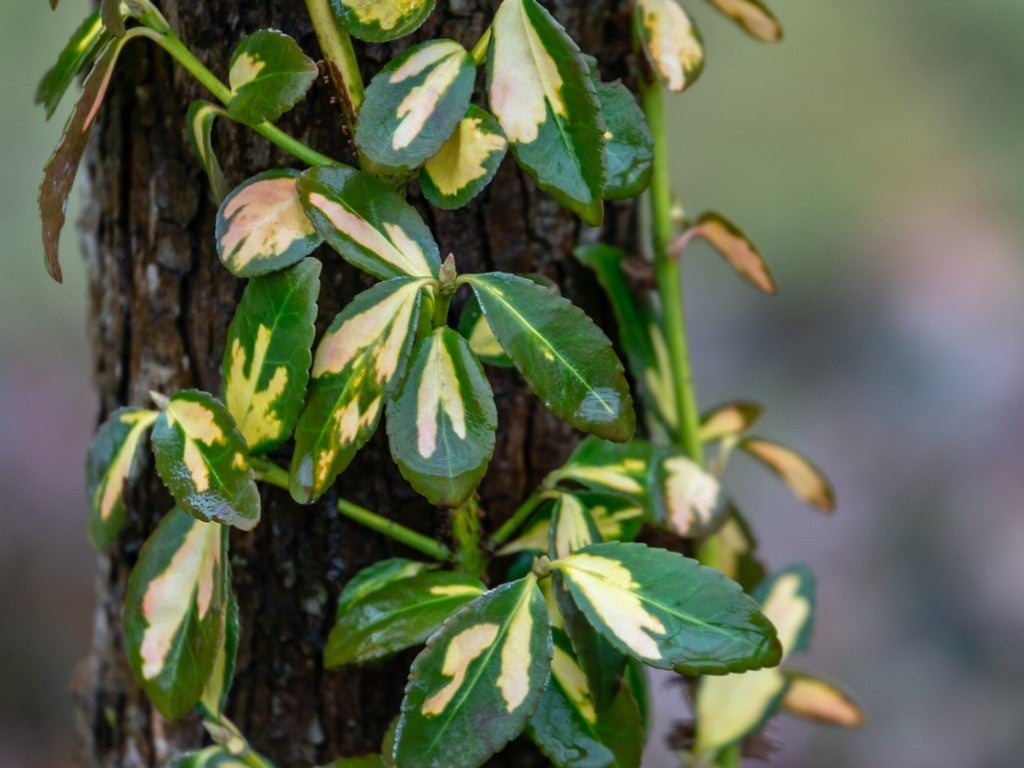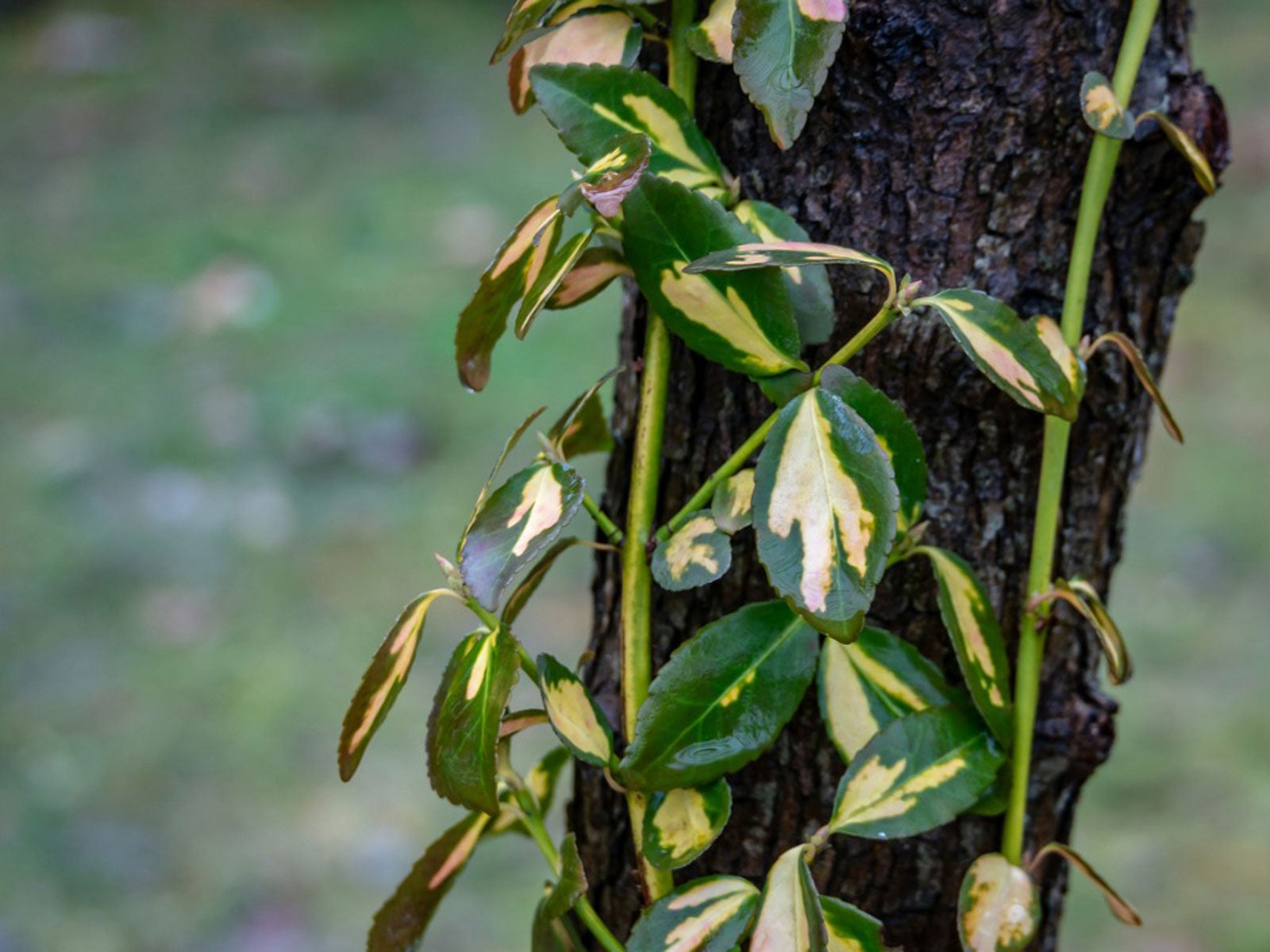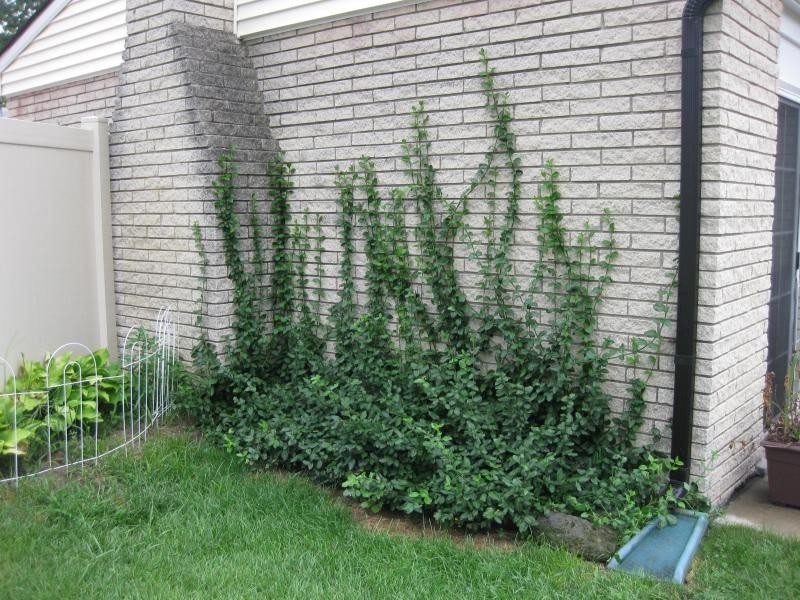Best Ways To Remove Wintercreeper Vine From Trees


Wintercreeper control is an important subject in areas where this fast-growing, non-native shrub and vine has taken root. It easily overgrows and shades native plants. You can remove euonymus by hand or with appropriate pesticides if growth is substantial.
What is Wintercreeper Vine?
Euonymus fortunei is also known as climbing or Japanese euonymus and wintercreeper. Native to Japan, euonymus grows as a groundcover, a shrub, and when given something to climb, a vine.
Wintercreeper produces rootlets from branches when they hit soil and also in the air. This helps the plant spread rapidly over the ground and up trees and supportive structures.
Is Wintercreeper Invasive?
Wintercreeper is not native to North America. It is also considered invasive in many areas. It grows very quickly and tolerates poor conditions, so it can easily outcompete and cover and smother native plants.
How to Get Rid of Euonymus
There are a couple recommended strategies for removing or killing wintercreeper in your garden:
- Hand pull. This is best used when you have few and small plants or in areas where you can’t apply herbicides. Simply pull out the plants being careful to remove all runners and roots. This is rarely a one-time solution, as any root fragment can regrow, but it helps manage plants. Pull when the soil is wet for best results.
- Cut and apply herbicide. If you need to remove a large euonymus vine to remove from a tree, this is a better strategy. Cut the stem close to the ground and apply an herbicide immediately. If you only cut, it will regrow. Applying herbicide to a cut stem is also an imperfect solution. The plant may eventually resprout from somewhere, so keep an eye on it.
To remove euonymus vines from your garden, it’s best to hand pull when you can and to use the cut stem method when pulling isn’t feasible.
Whichever method you use, be sure to dispose carefully of all plant parts. Do not put them in compost. All of it should be bagged and sent to the landfill.
Gardening tips, videos, info and more delivered right to your inbox!
Sign up for the Gardening Know How newsletter today and receive a free copy of our e-book "How to Grow Delicious Tomatoes".
Note: Any recommendations pertaining to the use of chemicals are for informational purposes only. Specific brand names or commercial products or services do not imply endorsement. Chemical control should only be used as a last resort, as organic approaches are safer and more environmentally friendly.

Mary Ellen Ellis has been gardening for over 20 years. With degrees in Chemistry and Biology, Mary Ellen's specialties are flowers, native plants, and herbs.
-
 Terrifically Tubular Flowers For Hummingbirds: 9 Tube-Flowered Plants To Attract Hummers
Terrifically Tubular Flowers For Hummingbirds: 9 Tube-Flowered Plants To Attract HummersGrowing tubular flowers for hummingbirds helps you create the optimum feeding conditions for your winged friends. Here are nine tubed delights for hummers
By Tonya Barnett
-
 How To Grow Hydroponic Tomatoes For Fresh Indoor Harvests – No Soil Required
How To Grow Hydroponic Tomatoes For Fresh Indoor Harvests – No Soil RequiredLearning how to grow tomatoes in water is easy and allows you to harvest fresh-home-grown produce in every season without any mess.
By Ellen Wells
-
 Wintercreeper Control – How To Get Rid Of Wintercreeper Plants
Wintercreeper Control – How To Get Rid Of Wintercreeper PlantsBy Mary H. Dyer
-
 Euonymus Wintercreeper - Tips On How To Plant Wintercreeper Vines
Euonymus Wintercreeper - Tips On How To Plant Wintercreeper VinesFor those interested in planting perennial vines in the landscape, consider growing Euonymus wintercreeper. Learning how to plant wintercreeper is easy and its care is simple too. Click here to find out more.
By Susan Patterson